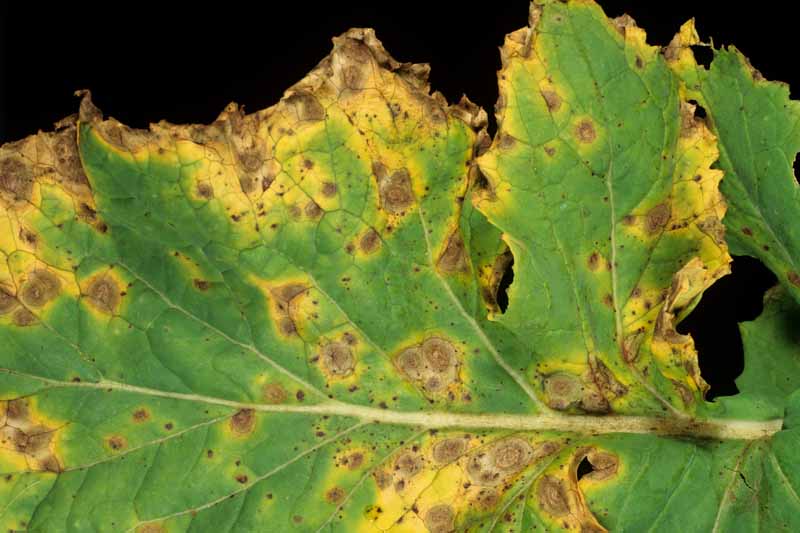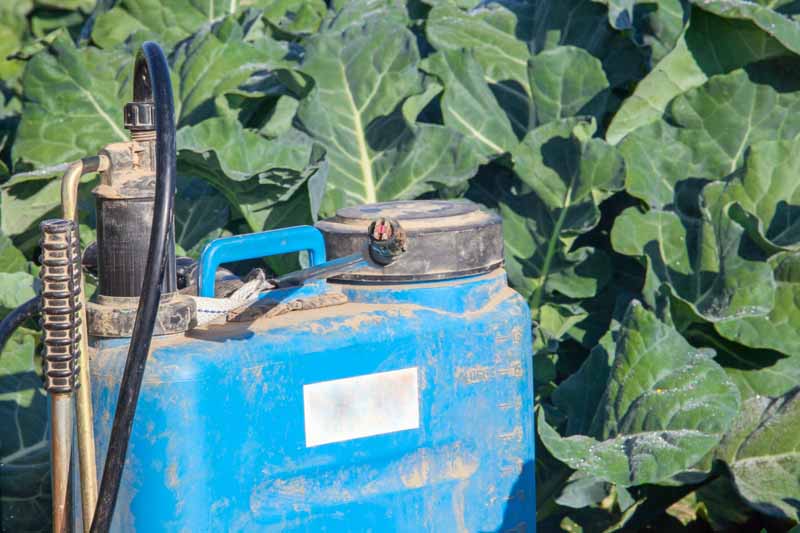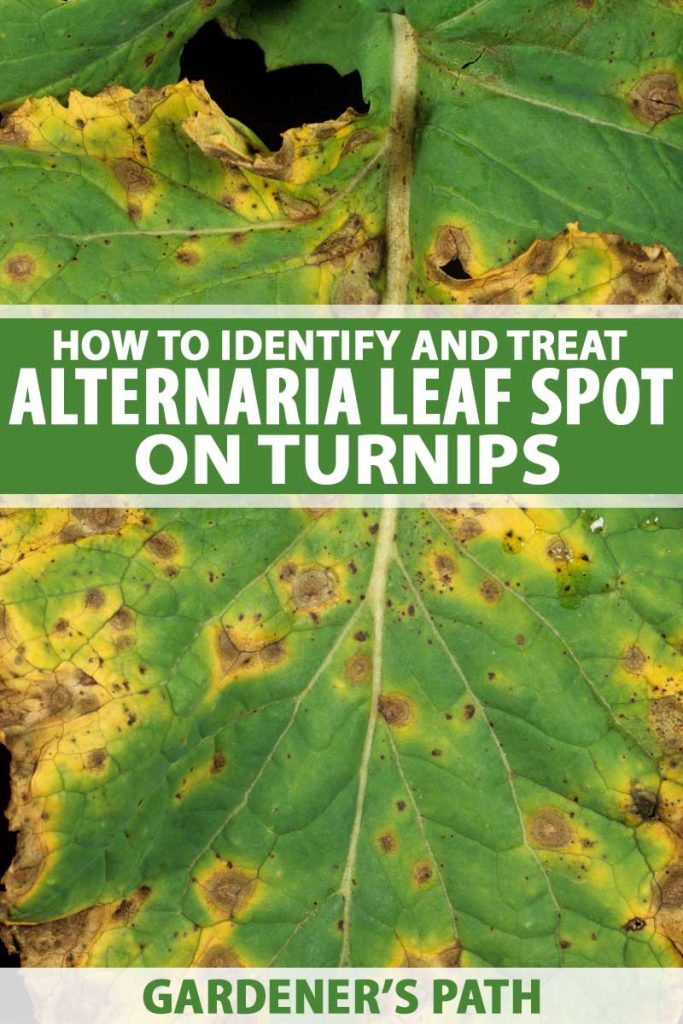Alternaria brassicicola / brassicae
Two species of the fungus Alternaria, A. brassicicola and A. brassicae, can cause leaf spot on turnips.
You will know that you have Alternaria leaf spots on your turnip or rutubaga leaves when they develop yellow to black leaf spots with concentric rings like a target.
This disease is mostly cosmetic and will not destroy your turnips. However, if you try to sell them, consumers and retailers will probably avoid buying from you if they have these symptoms.

We link to vendors to help you find relevant products. If you buy from one of our links, we may earn a commission.
Your options for controlling this disease vary depending on what part of the country you live in. States vary in the number and types of fungicides that you can use to control Alternaria leaf spot on crucifers.
However, there are a number of cultural controls that you can use and two microbial fungicides that can suppress this disease.
Read on for more information about Alternaria leaf spot of turnip and control methods.
What You Will Learn
Alternaria Leaf Spot Symptoms
The most common symptom is circular leaf spots on the turnip leaves. The spots start out yellow and then can become tan or black. They have concentric rings like a target.

The centers of the lesions can fall out, and the spots can blend together to form large regions of dead tissue.
The turnip plants can also develop lesions on the seedpods, flowers, flower pedicels, stems, and petioles.
Life Cycle
Alternaria survives outside of the plant – typically on debris from diseased crops. This fungus is likely to spread when the weather is warm (60-78 F) and moist, for example, 90% relative humidity for at least 12 hours.
The fungi produce a tremendous number of spores, which can be spread by splashing water, wind, people, or equipment.
The most common way to develop Alternaria on your turnips is by planting infected seed.
Cultural Control Methods
Using disease-free seed will substantially reduce the likelihood of your turnips contracting Alternaria leaf spot.
You can also treat your seed with hot water (122 F) to kill the fungus, although the seeds of cruciferous plants (like turnips) are often less likely to germinate if they have been subjected to this type of treatment. The Ohio State University offers instructions on how to treat your seeds.
You should avoid other types of crucifers as much as you can, since they can harbor the disease. Eliminate any cruciferous weeds like wild mustard that are near your plants. Also rotate with non-cruciferous crops for 1-3 years to reduce the levels of spores remaining in infected debris.
Do your best to keep the leaves of your turnips dry. If you irrigate, do so in the morning to give the leaves time to dry. Plant your rows so that they are oriented with the prevailing winds and reduce the density of your plantings.
After you harvest your turnips, incorporate all the debris into the soil, so it will decay and not be a source of spores to infect your next crop.
Fungicide Control Methods
Biofungicides
The New England Vegetable Management Guide produced by the University of Massachusetts Amherst recommends two biofungicides that can be used to treat Alternaria leaf spot. Both of these microbes are approved for organic production.
One is Bacillus amyloliquefaciens strain D737. While these bacteria will not cure an existing infection, they can prevent the disease from occurring. The Double Nickle formulation can be used as a foliar spray at 0.25 to 3.0 pounds per acre.
The other biofungicide is Bacillus subtilis, sold as CEASE, available at Arbico Organics.
Copper Sprays
Another option is to spray with Kocide (copper hydroxide).

Make sure that you spray in a solution with a pH higher than 6.5. You cannot use this spray on rutabaga.
Synthetic Fungicides
Several synthetic fungicides are available to treat Alternaria leaf spot on turnips. Two Group 11 fungicides include:
- Azoxystrobin (Quadris)
- Pyraclostrobin (Cabrio EG)
Do not rotate with other fungicides in this group.
Additional fungicides that can treat Alternaria leaf spots include penthiopyrad (Fontelis) and cyprodinil plus fludioxonil (Switch 6.25 WG).
Prevention is Your Best Bet
Although Alternaria leaf spot is a cosmetic disease and won’t kill your plants, people will not want to buy your turnips if they have this hideous infection on the leaves.
Since the most common way to contract this disease is to plant infected seed, you should buy turnip seed that is certified free of Alternaria. Another option is to treat your seeds with hot water to kill the fungus.
Get rid of any mustard or other cruciferous weeds that are near your plants and do your best to keep your turnip plants dry.
There are microbial and synthetic fungicides available to treat your turnips, and liquid copper is another option.
Vigilance will help eliminate this disease from your garden.
Have you fought with leaf spots on your turnips? If so, let us know how it went in the comments.
And read on for more information on diseases on turnips including:
- How to Identify and Control Black Rot
- How to Identify and Prevent White Rust
- How to Identify and Treat Downy Mildew
- Identify, Prevent, and Treat Bacterial Leaf Spot
© Ask the Experts, LLC. ALL RIGHTS RESERVED. See our TOS for more details. Top and bottom photos via Alamy. Other uncredited photos via Shutterstock.
